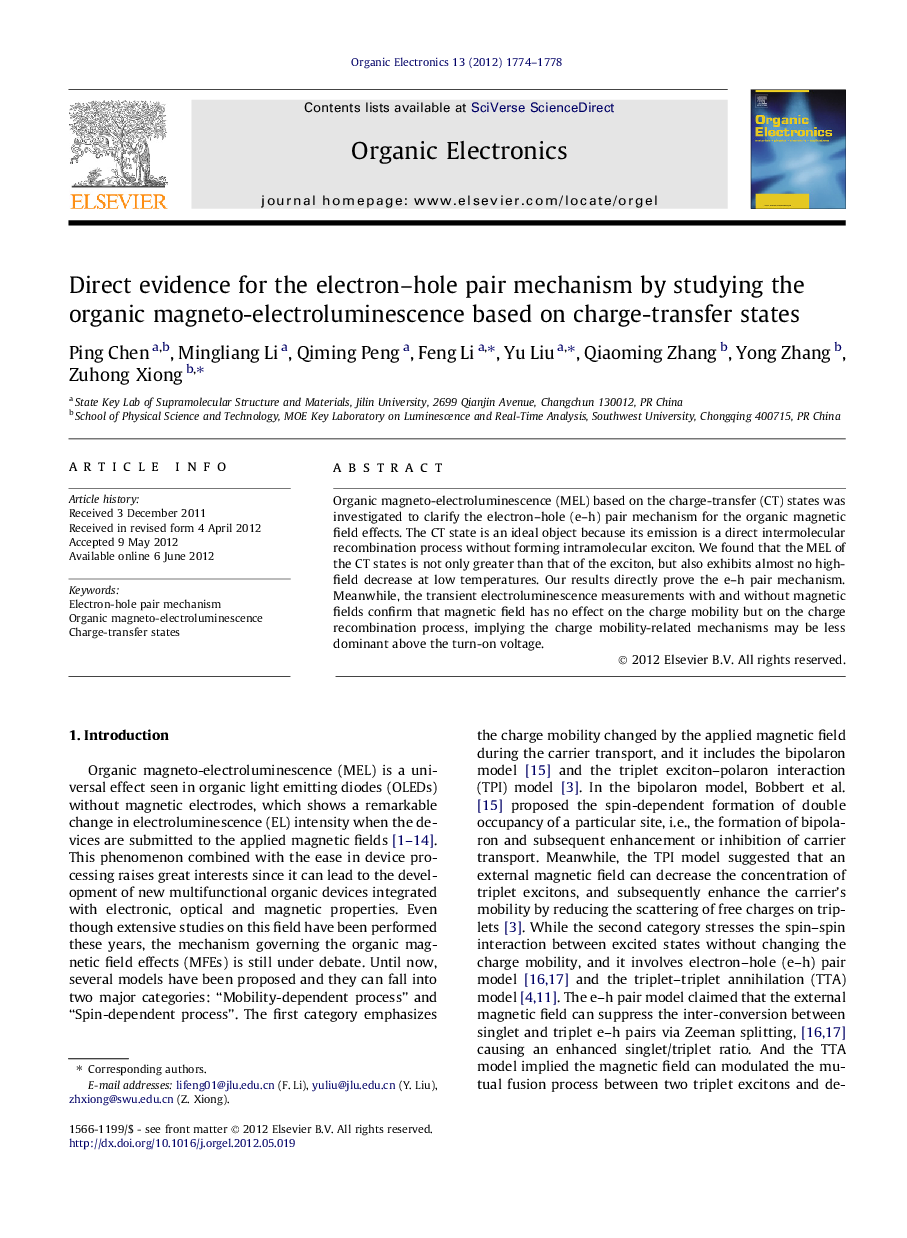| Article ID | Journal | Published Year | Pages | File Type |
|---|---|---|---|---|
| 1267343 | Organic Electronics | 2012 | 5 Pages |
Organic magneto-electroluminescence (MEL) based on the charge-transfer (CT) states was investigated to clarify the electron–hole (e–h) pair mechanism for the organic magnetic field effects. The CT state is an ideal object because its emission is a direct intermolecular recombination process without forming intramolecular exciton. We found that the MEL of the CT states is not only greater than that of the exciton, but also exhibits almost no high-field decrease at low temperatures. Our results directly prove the e–h pair mechanism. Meanwhile, the transient electroluminescence measurements with and without magnetic fields confirm that magnetic field has no effect on the charge mobility but on the charge recombination process, implying the charge mobility-related mechanisms may be less dominant above the turn-on voltage.
Graphical abstractFigure optionsDownload full-size imageDownload as PowerPoint slideHighlights► We report magneto-electroluminescence (MEL) of NPB:d(ppy)BF charge-transfer state. ► The MEL of NPB:d(ppy)BF CT state is larger than that of NPB exciton. ► The MEL of NPB:d(ppy)BF CT state does not change with injection current. ► The MEL of NPB:d(ppy)BF CT state exhibits no high-field decay at low temperature. ► Transient EL measurements revealed charge mobility was not changed by magnetic field.
